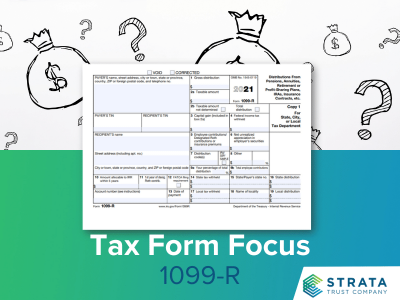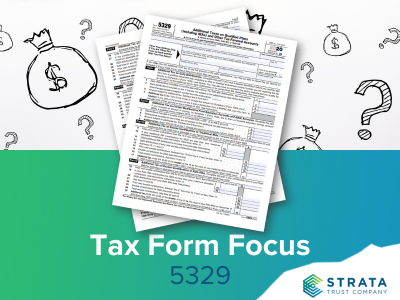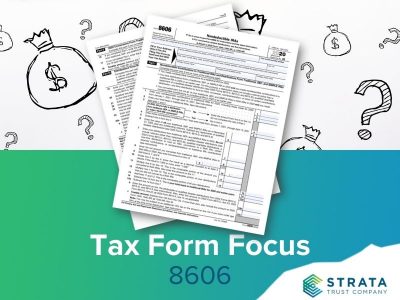With high hopes that 2021 will bring fewer last-minute, emergency changes to tax and IRA-related rules than we saw in 2020, now may be a good time to clear up any questions or confusion about the status of IRA-related changes made in 2020. This blog reviews the self-directed IRA rules that have permanently changed vs. extensions and exceptions that were allowed in 2020 but have now expired.
Tax-Filing & IRA Contribution Deadline
The deadline to file individual federal income tax returns and contribute to your IRA for a tax year is usually April 15 of the following calendar year (or the next business day if the 15th falls on a weekend or holiday).
|
Expired |
In 2020, the deadline to file 2019 tax returns and make IRA contributions was extended to July 15, 2020, due to complications presented by the COVID-19 pandemic. The extension to file or make a prior year IRA contribution up until July 15 applied only for 2019. |
|
Extended |
In 2021, the 2020 tax filing and IRA contribution deadline has been extended (again due to COVID-related challenges), but only for 1 month. The deadline to file your federal income taxes and contribute to an IRA for 2020 is *May 17, 2021. You may request an extension until October 15 to file, but this does not postpone the deadline to pay taxes or make an IRA contribution for 2020. *The IRS announced additional tax relief for February winter storm victims affecting residents of Texas, Oklahoma, and Louisiana. Taxpayers in these states have until June 15, 2021, to file their 2020 returns and make additional 2020 contributions to their IRAs. |
IRA Contribution Eligibility
It may have gone unnoticed last year with everything else going on, but more people are now eligible to contribute to an IRA because of law changes made by the SECURE Act of 2019.
|
Permanent |
The rules changed permanently last year to remove the 70½ age limit on contributing to a Traditional IRA. So long as you have earned income, you may continue making contributions to your Traditional IRA past age 70½. |
|
Annual Changes |
The income ranges that govern eligibility for taking a tax deduction for Traditional IRA contributions and for making a Roth IRA contribution will continue to increase each year if triggered by cost-of-living adjustments. You may want to double-check these limits each year you make a Traditional or Roth IRA contribution. |
IRA Withdrawals Before Age 59½
Three laws passed in 12 months that affected taxation of IRA withdrawals: the SECURE Act, the CARES Act, and the Consolidated Appropriations Act, 2021. Some of those changes are permanent, and some have expired.
|
Permanent |
The exception to the 10% additional tax for distributions before age 59½ due to the birth or adoption of a child is a permanent addition to the tax code. An IRA holder may withdraw up to $5,000 per child within one year of the birth or adoption and avoid the 10% early distribution tax. The amount withdrawn is still taxable (to the extent it is attributable to pre-tax assets in the IRA). IRA holders may also repay these amounts to their IRA at any time. |
|
Permanent |
Another permanent law change affects the exception to the 10% early distribution tax for IRA withdrawals taken to help pay for unreimbursed medical expenses that exceed a certain percentage of the IRA holder’s adjusted gross income. The threshold to meet this exception had been 10% but was reduced temporarily to 7.5% for tax years 2017–2020. The 7.5% threshold is now permanent. |
|
Expired |
The ability to take a “coronavirus-related distribution” (CRD) expired December 31, 2020. If you were eligible to take a CRD in 2020, you could have withdrawn up to $100,000 from your IRAs and employer-sponsored retirement plans with certain tax relief, explained below. |
|
Temporary |
While CRDs may no longer be taken, the tax relief applicable for those 2020 distributions will continue to apply for three years. 1. Waiver of the 10% early distribution tax on CRDs 2. Option to claim the entire CRD in taxable income for 2020 or spread the taxation over three years (2020, 2021 and 2022) – The election must be made with your 2020 federal tax return. 3. Option to repay a 2020 CRD to an IRA within three years – IRA holders have three years after the date they received a CRD to repay some or all of the amount withdrawn and recover any taxes already paid on that amount and/or avoid paying tax on amounts not yet included in income. |
IRA Withdrawals After Age 70
Perhaps the most confusing and most publicized changes last year were to the required minimum distribution (RMD) rules.
|
Expired |
Because of the drastic drop in market values in 2020 when it became apparent we were in the midst of a global pandemic, Congress waived the requirement for RMDs to be paid out for 2020. This was to help retirees avoid locking in those market losses by taking a required distribution. |
|
Expired |
Those who had already taken their RMD for the year were allowed to put it back in the IRA as a rollover by the later of 60 days following the distribution or August 31, 2020. The RMD waiver and the option to roll over an RMD have expired. |
|
Permanent |
What remains a permanent change to the RMD rules, however, is the age at which they now must start. RMDs used to begin for the year an IRA owner turned 70½. Beginning in 2020, the beginning age for RMDs is 72. |
|
Permanent |
Despite the changes to the RMD age and Traditional IRA contribution age, the rules and age for making a Qualified Charitable Distribution (QCD) were not changed. IRA holders and beneficiaries age 70½ and older may make QCDs under the existing rules. What has changed is that you if you make tax-deductible contributions to your Traditional IRA after age 70½, you will have to subtract that amount from the amount you can exclude from your taxable income as a QCD. |












